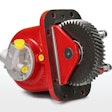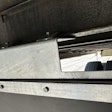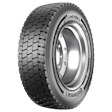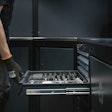Good aftermarket inventory is ever-changing. But adding new product lines takes more than just finding space on a warehouse shelf.
To truly succeed with new products, distributors must evaluate growth opportunities within a customer base, target areas that are underserved and select the right products to fill voids.
Increasing sales comes from adding the right prod- ucts, not just more products.
“When we look at inventory it’s all about earns and turns,” says Brandon Ford, vice president of sales and marketing at The Power Train Companies. “Before we add a new product line, we have
to identify if it’s worth keeping it on the shelf.”
The first step for distributors considering new product lines is addressing which product categories offer the most growth potential.
Using analytics to track your sales numbers can be an excellent resource in these cases, says Kent Savage, CEO of APEX Supply Chain Technologies.
“We think it’s critical to be able to track” what you’re selling, he says. “Without the ability to track, manage and control [what products are moving], your inven- tory can be ineffective.”
Most inventory tracking software currently available for distributors is built to identify the rate in which products are turned, and estimate the quantity neces- sary for inventory replenishment.
By taking that information and studying it over time, distributors can uncover product categories that are growing in profits and turnover rate. Fading parts categories also can be identified, and Savage says both situations can give distributors insight on whether inventory changes need to be made.
“It allows you to optimize the productivity of your business,” Savage says.
Listening to customer chatter also is valuable when considering adding product lines.
Ford says loyal customers are usually vocal about the types of products they’d like a distributor to stock because they want to be able to buy them from said distributor.
A customer won’t request something it doesn’t need, and when multiple customers start requesting the same product that’s usually a good sign to start looking at adding it, he says.
In these cases research can again come in handy, says Robert Siddall, product manager at Parts for Trucks.
“If we get a request for some- thing I’ll check it out,” he says.
When checking on new product requests, Siddall notes it’s important to contact a wide selection of cus- tomers. Location, duty cycle and unit make and model all impact the likelihood a customer needs a new product.
“We tend to look for items that a broad amount of customers would use on a regular basis,” he says.
Technology is another reason for distributors to consider adding product lines.
With every passing year new advancements are inte- grated into heavy-duty trucks. And once an OEM spec’s a new product, it’s only a matter of time before it hits the aftermarket.
Denise Reeves, vice president, aftermarket at Consolidated Metco, says her actively works with its distributors.
Reeves says constant communication between ConMet and its distributors ensures both sides can work together to provide their end-user customers with the right product lines for their needs.
Ford says Power Train appreciates that type of customer service from its suppliers.
Hearing about new products from customers is great, but by the time cus- tomers start contacting distributors they already need the part. A heads up from a supplier can ensure a product is on a distributor’s shelf when those customers start calling, he says.
“It helps when [suppliers] communi- cate with us first,” Ford says. “When they let us know what’s coming so we’re ready for the customers.”
Ford adds that once a new product line has been identified, the supplier- distributor relationship truly becomes invaluable.
Adding a new product line requires a cooperative effort from both sides.
Siddall says when he identifies a new product line for Parts for Trucks his first call is to the suppliers that would best help him sell it.
Siddall says acquiring sales trends is an important part of his inquiry, but when he reaches out to a supplier he also looks for assurances the manufacturer will stand behind the product once it is on his shelves.
“We ask them ‘If we give this a go will you protect us on it?’” he says. “We want to know if it doesn’t sell well or there’s a problem that they’ll support it, and us.”
Offering customer support is a key sales strategy for Bendix, says Director of Corporate Accounts John Allgaier and Director of Marketing Dave Schultz.
The duo says Bendix’s aftermarket sales team works hard to build relation- ships with its customers that motivate them to reach out when considering
a new product line. And any time a distributor adds a new Bendix product, it does so with the full backing of the Bendix team.
“We provide a certain level of service to end user and fleet customer,” says Schultz. “Our ability to do that is some- thing we hold near and dear.”
Siddall says in some cases he’ll stock a new part sight unseen based on the feed- back he gets from a trusted supplier. In cases where there’s still doubt about the new product’s profitability, Siddall says he prefers vendors who are willing to of- fer a controlled trial distribution period.
These periods can last anywhere from a month to a year, and allow Siddall to track the turns he can get on a new prod- uct to identify how many he’ll need to stock and/or if it’s worth carrying at all.
Bendix offers these programs on a wide-selection of products, and Allgaier says the company tries to stay in contact with a distributor during a trial run to offer any sales support or assistance necessary.
Siddall notes trial programs are extremely valuable when entering into a new supplier relationship. They not only provide both sides time to identify sales trends, but they give the supplier a chance to prove it can be a valuable partner.
Savage says APEX’s products offer distributors a valuable tool in tracking parts turns during a trial run.
“You can stock something in the machine for a while and see how it goes,” he says. “Our system allows you to see exactly how fast that inventory turns. Our system notes [inventory turns] in real-time … You always know what is moving, and how fast it’s moving.”
A strong relationship also can ease the stress of pricing a new product.
Reeves says ConMet has strong, sup- portive relationships with all of its dis- tributors. The two sides routinely work together to decipher the best products and prices for their customers, she says.
The company also has a strong sales support and training team, which offers even more aid for distributors in pro- moting ConMet’s full line of aftermarket products.
“We educate them about the products they are stocking and how we are going to promote them,” she says.
“We get a lot of pricing recommenda- tions from suppliers,” adds Ford. “They help us identify a reasonable price.”
Having a strategy for adding existing product lines also can benefit a distribu- tor. There are situations in the aftermarket when one supplier may offer a new prod- uct at a price point competitive with an- other, current supplier, and a distributor is forced to choose the vendor provides who best opportunity for sales growth.
In these situations Parts for Trucks evaluates its business relationships with both companies before deciding how to proceed, says Paul Raymond, president. “Just because we like [supplier] A doesn’t mean we’re going to drop [sup- plier] B because we like A’s product lines,” he says.
And Siddall adds not every supplier decision is based solely on price. There are times where Parts for Trucks will continue, or enter into, a relationship with a supplier at a slightly higher rate than another supplier simply due to the customer service advantage the first busi- ness provides.
“Sometimes it’s more than meets the eye,” he says.
The last step in successfully installing a new product line is marketing. Cus- tomers must be informed of all inventory changes.
“Once you bring on a new product line you have to take the next step and let everyone know,” says Siddall. “That can make or break a product line.”
“You have to be able to show that product can provide some level of value to the end user,” Allgaier says.
Adds Raymond, “You can’t just send one quick email and assume everyone’s going to remember. You have to beat the drum a little.”











